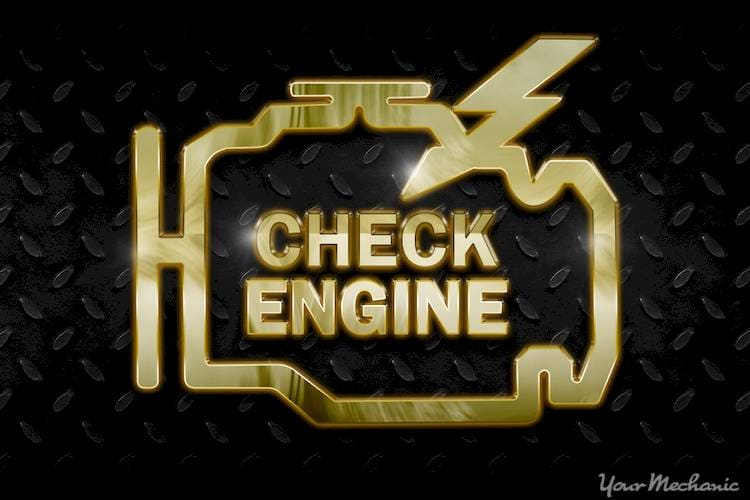

What the P3487 code means
This code indicates that there is a problem with the exhaust valve on cylinder number 11. Your vehicle’s powertrain control module (PCM) can recognize that the measured values of the mass airflow sensor, the throttle position sensor, and the intake control manifold absolute pressure sensor, are not within the established range for V4 mode, the P3487 code will appear. When this occurs, the PCM will tell the cylinder deactivation solenoids to start what is called the cylinder deactivation process. The cylinder deactivation solenoids then deactivate cylinder 1, cylinder 4, cylinder 6, and cylinder 7, and they do this by restricting the flow of oil to the valve lifters for these cylinders and not allowing the exhaust and intake valves to open. Your vehicle will not be able to function correctly under V4 mode if these three sensors are not operating within the range that they should be.
What causes the P3487 code?
One cause for a P3487 code is a faulty cylinder deactivation solenoid. It could also be that you have, low oil levels in your engine, poor oil pressure on your lifters, or defective lifters. Other potential causes include an open or shorted cylinder deactivation solenoid harness or a cylinder deactivation solenoid circuit with a poor electrical connection.
What are the symptoms of the P3487 code?
The two symptoms most commonly associated with a P3487 code are a vibrating engine and an illuminated Check Engine Light.
How does a mechanic diagnose the P3487 code?
Always check that your engine oil levels and oil pressure are at the levels recommended by your vehicle’s manufacturer. You can then use your OBD-II scanner to gather any diagnostic trouble codes that have been stored by your powertrain control module (PCM). Always remember that if your PCM has stored other deactivation or oil pressure trouble codes that you will need to attend to these codes first.
Always work in the order that the codes appear on your vehicle’s PCM. After that, use your OBD-II to clear any existing trouble codes, and then test the cylinder deactivation solenoid 1 by actuating it with your scan tool. A solenoid that is working properly will vibrate and make a tiny "click" sound. If the cylinder deactivation solenoid 1 is not working as it should (if you do not hear this click), check your oil passages for dirt and debris. You may find that you need to clean out your vehicle’s oil passages. In some instances, you may need to replace the entire solenoid; however, if the cylinder deactivation solenoid 1 is working well, then you should examine the cylinder deactivation solenoid 7. You test this the same way you tested the other solenoid, which is by actuating it with your scan tool.
If all your solenoids appear to be working properly, you will need to examine the oil passages to the lifter. Again, clean the passages if you think it is necessary. In extreme cases, the engine block will need to be disassembled and cleaned completely. But make sure that you are trained to do this, since it can become complicated and difficult to reassemble if you don’t know have the proper experience and knowledge.
Common mistakes when diagnosing the P3487 code
A common mistake people make when they see a P3487 code is to replace their crankshaft, wheel speed sensors, and camshaft position sensors. Replacing these will not solve your exhaust problems. You should beware that in order to diagnose your issue, you will need the right diagnostic equipment. You can acquire this equipment yourself, or you can take your vehicle to a professional technician who can diagnose the issue for you.
How serious is a P3487
A P3487 is very serious and, in most cases, should be examined by a professional technician. Not only is a P3487 a serious issue but it is also laborious to fix, requiring costly and specialized diagnostic equipment and hours of time. If you do not have this equipment or time, you will want to see a professional technician and have him or her determine just what has gone wrong with your vehicle.
What repairs can fix the P3487 code?
One repair is to replace your cylinder deactivation solenoid 1. However, if this solenoid seems to be working well, you may need to replace your cylinder deactivation solenoid 7, which you test the same way you tested solenoid 1.
You may also need to clear your cylinder deactivation solenoid oil passages of debris and dirt, and then clean out your lifter oil passages. In more extreme cases, you will need to replace the lifters in your engine. If you notice that your engine is packed with debris and dirt, you will probably need to disassemble the entire engine and perform a thorough cleaning. This is a difficult job, and you need to do an extensive amount of research before starting in.
Additional comments for consideration regarding the P3487 code
A P3487 can be a difficult problem to solve. It may require that you dissemble your entire engine, which can be time consuming and tedious if you do not have the proper training and tools. However, if you are considering doing this on your own, you may want to contact a trained technician to seek advice about the best ways to solve this issue.
Need help with a P3487 code?
YourMechanic offers certified mobile mechanics who will come to your home or office to diagnose and repair your vehicle. Get a quote and book an appointment online at or speak to a service advisor at 1-800-701-6230.



